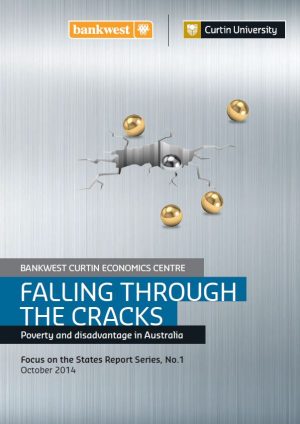Falling Through the Cracks
The concept of disadvantage is one that invokes a number of connotations, including poverty, exclusion and deprivation. Generally disadvantage relates to a lack of resources and opportunity to achieve a basic standard of living.
A number of Australian studies have sought to further understand the extent of poverty and disadvantage, many of them using a ‘standard’ measure of income poverty based on the proportion of people with equivalised household income below 50% of the national median. However, many households have access to far less income.
Falling through the Cracks is the first in the Focus on the States series produced by the Bankwest Curtin Economics Centre (BCEC). Our intention with this report is to add a much needed perspective to the national debate around poverty by examining just how deep income poverty extends throughout Australian households and what factors exacerbate the incidence and depth of poverty.
One of the key findings of our research is that more than one million people in Australia are living in severe income poverty, having access to household income of less than 30 per cent of the national median. This is a concerning number of people, of which more than 300,000 are children.
Dimensions of poverty and disadvantage are many and are often inextricably linked. Factors that at the outset may drive people towards or into poverty can quickly become outcomes of poverty in themselves, exacerbating the incidence and depth of poverty an individual experiences and perpetuating the cycle of disadvantage.
Who is falling through the cracks? Single person households, those renting, those with a disability, Indigenous and jobless households are the groups that are most exposed to deep and persistent poverty and disadvantage. These households are grossly over-represented in both ‘standard’ and severe income poverty measures and represent the highest risk groups for being persistently poor over extended periods of time.
Poverty, especially deep and entrenched disadvantage, is a complex problem of course, but for one million people to be in severe poverty represents something of a failure of Australia’s social and economic systems to protect those in greatest need. However, it does represent an opportunity to rectify these disparities and develop inclusive and supportive policies and programs that prevent further slippage and enable these individuals and households to thrive rather than just survive.





